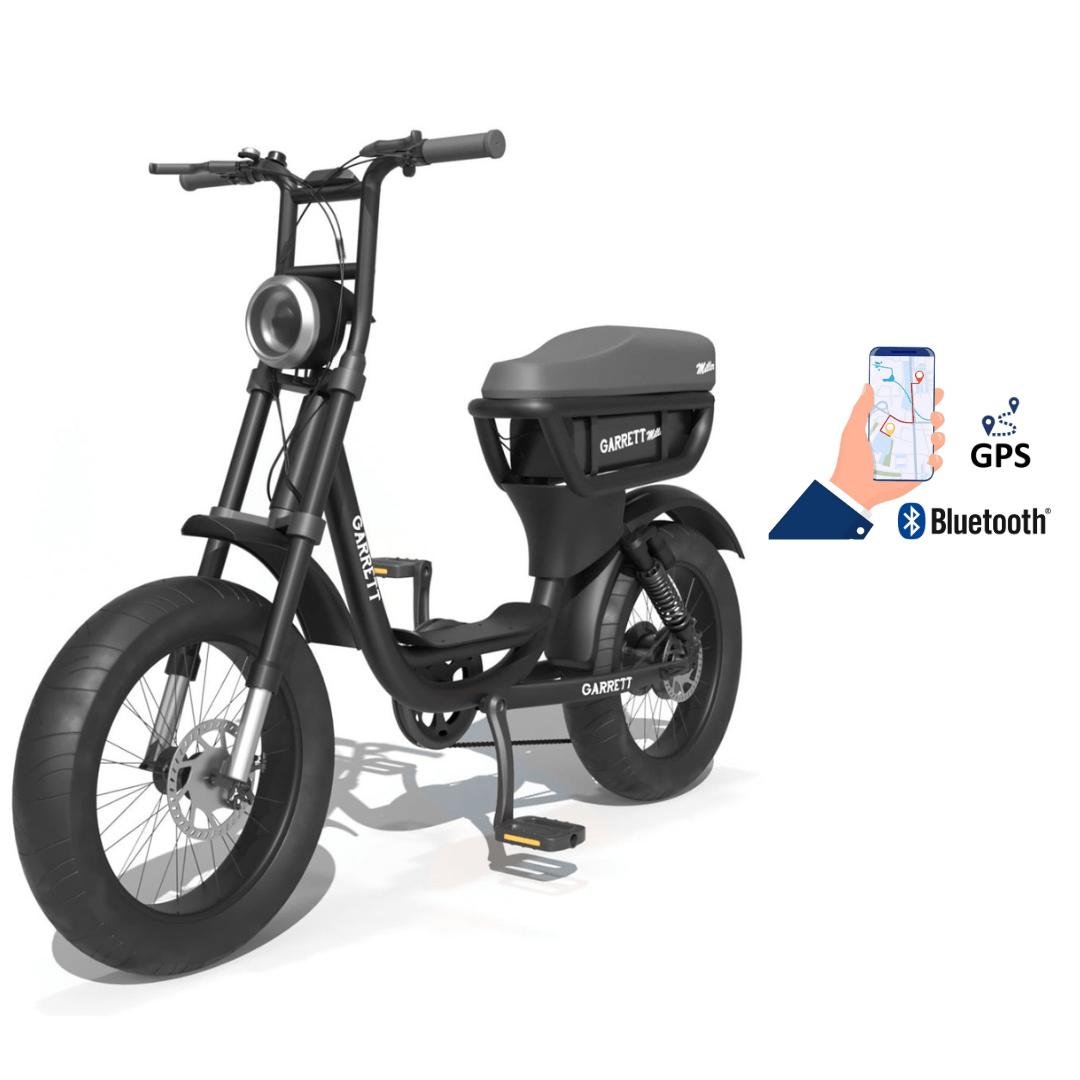Delivering quickly, without exploding costs, in increasingly congested cities, is the daily challenge for many professionals. Between ZFE restrictions, soaring fuel prices, and growing customer expectations, it is becoming urgent to rethink urban logistics. What if the solution was found in an electric bike? More precisely, the electric cargo bike. It is now establishing itself as a true revolution for delivery professionals. In this article, we explain how to optimize the profitability of your delivery business thanks to the electric cargo bike.
Why is the cargo bike becoming essential in modern urban logistics?
With the densification of city centers, traditional deliveries are becoming a real headache. The electric cargo bike then emerges as a logical, efficient, and suitable response to current constraints. It transforms urban delivery into a smooth and fast solution, even during rush hour.

A vehicle designed for the city
Thanks to their compact size and agility, cargo electric bikes slip through where vans come to a stop. Whether you choose a two-wheeler, a tricycle, or a longtail model, you benefit from a carrying capacity ranging from 80 to 300 kg. No more parking hassles or restricted areas: you can access low-emission zones, pedestrian areas, and downtown alleys without any constraints.
Result: less stress, more deliveries, and smooth traffic in all circumstances. Among the most prominent cargo electric bikes, the Granville range is one of the most reliable on the market.
A strategic alternative in the face of urban constraints
Urban mobility policies are tightening and imposing new rules. Low Emission Zones (ZFE) restrict access to combustion engine vehicles, pushing professionals to rethink their approach. In this context, the cargo bike becomes a major ally. In Paris, Lyon, and even London with the Streetspace program, everything is done to encourage its use. The result: the market is booming with growth of 45 to 60% per year; a trend that proves the cargo bike is not a fad, but a real logistical revolution.
Profitability: how does the cargo bike drastically reduce costs?
Investing in an electric cargo bike means choosing a profitable professional vehicle, both in the short and long term. By replacing a diesel van with a cargo bike, you can significantly reduce your expenses and improve your margins without compromising the quality of your deliveries.

Less spending, more margin
An electric cargo bike costs up to three times less than a thermal utility vehicle, both in purchase and maintenance. No more fuel, oil changes, expensive insurance, or parking fines. In the end, you save up to €6,000 annually, according to several studies. And for those who want to preserve their cash flow, leasing or long-term rental options are available. Not to mention local subsidies, like in Paris, where you can get up to €1,200 for the purchase of an electric model.
Quick return on investment
With an average price ranging between €3,000 and €7,000 (for example: €5,000 for the Granville longtail electric cargo bike), the cargo bike remains a reasonable investment, especially when supported by regional aid and the ecological bonus. Adding to that the delivery bonuses offered by the ColisActiv’ program, some companies see a return on investment in less than a year.
This is notably the case for Douze Cycles in Lyon or Urban Arrow in Paris, who have optimized their logistics costs while gaining efficiency. In short, the cargo bike is good for the planet... and for your accounting.


Boosted productivity: deliver more, faster, without getting tired
What if you could double the number of your daily deliveries without ending the day exhausted? Thanks to electric assistance and digital tools, the electric cargo bike saves you valuable time while lightening your workload.

Enjoy the electric assistance and the power of the motor
With powerful motors like the Bosch Cargo Line or Shimano Steps, delivering up to 85 Nm of torque, climbing a hill loaded with parcels has never been easier. The electric assistance allows you to maintain a steady pace, even with several dozen kilos on board. The range, which varies between 60 and 120 km per day depending on the model and usage, is more than enough to cover your routes.
Result: you can double the number of deliveries per day compared to a van, especially in dense areas where each stop costs time.
Connected tools for better delivery
Power isn't everything. To maximize your productivity, you also need to organize your routes well. This is where management software dedicated to cycle logistics comes into play. Solutions like MTS-1 or AntsRoute help you plan your routes, integrate logistics hubs, and optimize each trip. In practice, you can achieve up to 10 deliveries per hour, compared to 6 with a conventional motorized vehicle. More parcels delivered, fewer unnecessary kilometers, and a much better-controlled workday.
Brand image, CSR, and customer loyalty: important issues
Choosing an electric cargo bike is not just a practical or economical choice: it is also a stance that enhances your image and appeals to your customers. By showing that you are committed to cleaner delivery, you send a strong signal.

Responsible and rewarding communication
With zero direct emissions and nearly a 90% reduction in carbon footprint compared to a thermal utility vehicle, the cargo bike becomes a real communication asset. It highlights your CSR commitment and sets you apart from the competition. Whether you deliver to individuals or professionals, this effort is inevitably noticed and appreciated. You are no longer just a delivery person; you become an actor in the ecological transition.
Positive feedback from customers and delivery drivers
On the customer side, the cargo bike provides a smoother, quieter experience, often more punctual. On the delivery side, there is less fatigue, better working comfort, and a stronger connection with customers. This human and sustainable approach then creates a virtuous circle: your company's image improves, satisfaction increases... and loyalty follows.
How to choose the right electric cargo bike to optimize its profitability?
Not all cargo bikes are equal. To truly benefit economically from your investment, you need to choose the model that suits your daily needs. Type of route, load carried, available budget: every detail matters.

Biporter, tricycle, or longtail: which to choose?
The tricycle is designed for those who transport heavy and bulky loads: it offers excellent stability and can support up to 300 kg. The two-wheeler, slimmer and more compact, is ideal for quick rounds in the city center. As for the longtail, it represents a good compromise for those seeking versatility and maneuverability. It's up to you to choose according to your use and delivery environment.
Cost, equipment, maintenance
A professional cargo bike is not just two wheels and a box. You need to plan for suitable equipment: secure box, quality lock, onboard GPS, rainwear…
The tricycle, although more robust, can be more expensive to purchase and require more maintenance. If you are a beginner or want to limit your initial costs, leasing is an interesting option, allowing you to access high-end equipment without breaking your budget.
Evaluating the profitability of a cargo bike in the long term: a winning choice on multiple levels
If the electric cargo bike is increasingly appealing to professionals, it is because beyond the comfort of use or the eco-friendly image, it establishes itself as an ultra profitable solution over time. A quick return on investment is good. But solid profitability over 3 to 5 years is even better. Here is how the cargo bike can truly transform your logistics costs sustainably.

Cargo bike vs thermal utility vehicle: a comparison that speaks numbers
Over a period of 5 years, the cost differences between a conventional utility vehicle and a cargo bike are striking. While a combustion engine vehicle accumulates expenses for purchase, maintenance, fuel, insurance, and various fines, the cargo bike limits expenses to the essentials.
|
Expense item |
Utility vehicle |
Electric cargo bike |
|
Average purchase cost |
25 000 € |
5 000 € |
|
Fuel / energy (year) |
2 000 € |
100 € |
|
Interview (year) |
1 000 € |
150 € |
|
Assurance (an) |
1 200 € |
200 € |
|
Parking / fines (year) |
800 € |
0 to 100 € |
|
Total over 5 years |
43 000 € |
7 250 € |
Result: nearly €36,000 in savings in favor of the cargo bike. A difference that weighs heavily on the overall profitability of your business.
TCO: a complete view of the total cost of ownership
The TCO (Total Cost of Ownership) allows for evaluating the real cost of a professional vehicle over its entire lifespan. By including all variables such as purchase, maintenance, energy, insurance, depreciation, and even hidden costs... the cargo bike shows an unbeatable TCO.
• Average lifespan of a cargo bike: 7 to 10 years (with good maintenance)
• Estimated annual operating cost: €1,500 to €2,000
• Average ROI: between 8 and 14 months depending on usage
"We replaced two vans with three cargo bikes. In one year, the savings covered the investment. And we deliver more, better, without stress."
- Marc D., Logistics Manager in Lyon
Case studies: when profitability becomes concrete
Urban arrow in Paris: +30% productivity and -60% fixed costs
This cycle logistics company has replaced its old thermal fleet with about ten electric cargo bikes. Result: drastic reduction in fuel costs, time savings on each route, and more daily deliveries.
Twelve cycles in Lyon: a return on investment in less than 9 months
Specializing in last-mile delivery, Douze Cycles has adopted the biporteur model for its dense downtown routes. Thanks to local subsidies and fine optimization of routes, the company saw its revenue increase by 18% in the first year.
In summary: a smart and sustainable investment
Adopting a cargo bike is not just about following a green trend. It is making a strategic choice with high added value. By reducing fixed costs, increasing agility in the field, and improving customer satisfaction, you are betting on profitability in the short, medium, and long term. And in a world where every euro counts, it is a lever not to be overlooked.
Conclusion
More eco-friendly, more agile, and above all more profitable: the electric cargo bike is far from just a simple gadget. It is a strategic tool for professionals who want to stay efficient in the face of urban logistics challenges. It allows you to reduce your costs, increase your productivity, and improve your company's image, while addressing environmental issues. If you are ready to take the plunge, find now on Weebot the best cargo bike models to transform your delivery business and boost your profitability.

